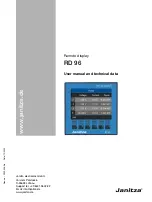
21
l
The test port key interlock shall have its
key inserted and bolt withdrawn.
l
One key will be present and held in the
key transfer interlock.
l
The key transfer interlock will have no
key, and the selector switch is locked in
the OFF position.
A1.4
Key interlock checks. These
interlocks enable and control
grounding operation.
A1.4.1
Close test port slides. Without
turning the key in the test port key
interlock, attempt to withdraw the
key. The key shall not be
withdrawable with the interlock
bolt withdrawn and test port slide
free to move.
A1.5
Electrical operation check
Refer to typical schematic diagram
illustrated in Figure 16: Typical
ground and test device schematic
on page 47 for all discussions
related to wiring or control circuits.
The schematic wiring diagram for
the specific ground and test device
may differ to suit requirements of
the user.
For the following electrical
operation check, refer to the
ground and test device rating plate
located on the front of the device,
and determine the correct control
voltage.
Control power may be applied by
use of the split plug jumper
accessory or the test cabinet
accessory, whichever is available at
the location.
A1.5.1
Rotate the key in the test port key
interlock. The interlock bolt will
become extended, locking the test
port slide in the closed position.
The key shall be withdrawable.
Confirm that the key works only in
the key transfer interlock and in the
test port key interlock (refer to
step A1.3).
A1.5.2 Insert the key in the key transfer
interlock, but do not turn it. Try to
remove the second key in the key
transfer interlock. It should not be
removable. Rotate the first key and
try to remove the second key. The
second key should be removable,
and must fit and work only in the
interlock associated with the
selector switch. With the second
key removed, confirm that the first
key is not removable.
A1.5.3 Verify by electrical continuity
checks that each of the test ports
which can be uncovered are
connected only to their respective
copper primary extensions
(conductive studs) or dummy studs
(refer to Table 1: Type 38-3AH3-
GTD ground and test device types
on page 7).
A1.5.4 Insert the second key from the key
transfer interlock into the interlock
associated with the selector switch.
Upon insertion and rotation, the
control switch should be free and
rotatable among its three positions:
CLOSE, OFF and TRIP.
A1.5.5 The selector switch may be locked
by key or padlock only in the OFF
position. Confirm this is true.
Padlock provisions must be well
aligned in the OFF position.
A1.5.6 Refer to typical schematic wiring
diagram illustrated in Figure 16:
Typical ground and test device
schematic on page 47
for all
discussions related to wiring or
control circuits. The schematic
wiring diagram for the specific
ground and test device may differ
to suit requirements of the user.
A1.5.7 Install remote control cable and
pushbutton station. The cable plug
mates with a receptacle on the
control panel of the ground and
test device.
















































